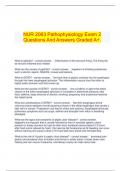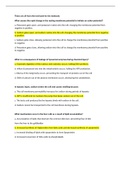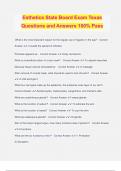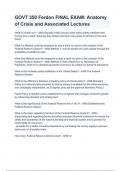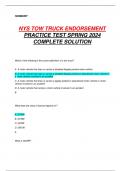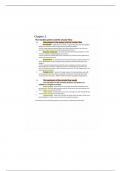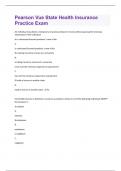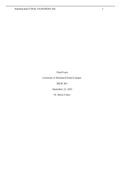Exam (elaborations)
NUR 2063 Pathophysiology Exam 2 Questions And Answers Graded A+.
- Course
- Institution
NUR 2063 Pathophysiology Exam 2 Questions And Answers Graded A+. What is gastritis? - correct answer. Inflammation of the stomach lining. The lining will be red and inflamed and irritated What are the causes of gastritis? - correct answer. Ingestion of irritating substances su...
[Show more]
